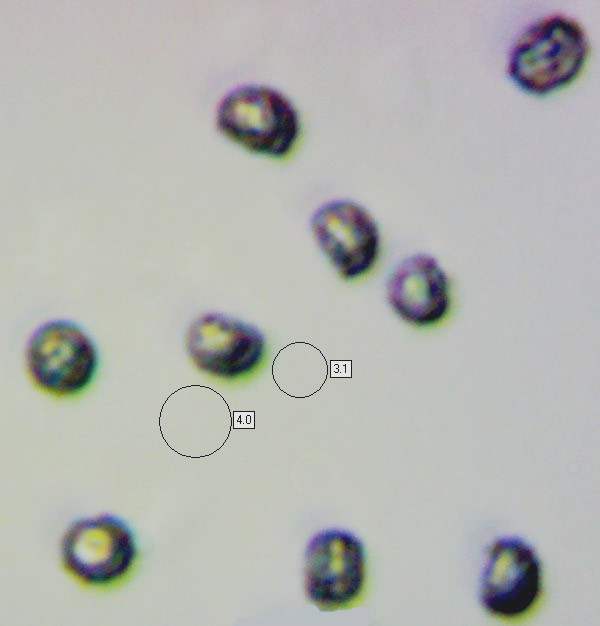Lentinellus cochleatus (Pers.) P. Karst. - Aniseed Cockleshell
Phylum: Basidiomycota - Class: Agaricomycetes - Order: Russulales - Family: Auriscalpiaceae
Distribution - Taxonomic History - Etymology - Identification - Culinary Notes - Reference Sources
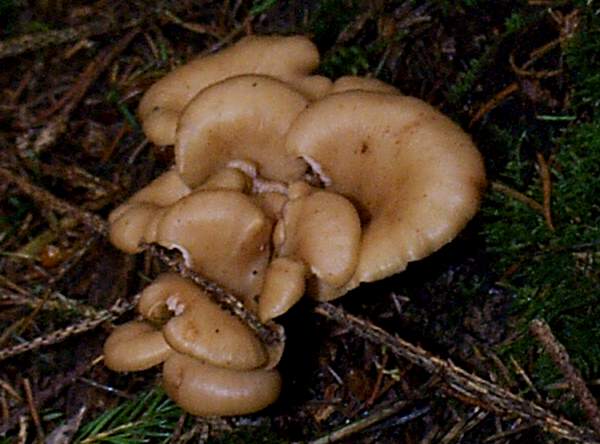
Shaped like a cornet with a notch taken out of one side, Lentinellus cochleatus is an occasional fungus that appears on hardwood stumps in autumn. It has a mild aniseed odour and flavour, and as a result one of its other common names is the Aniseed Cockleshell.
Despite having the word Tawny in one of its older common names the colour of the cap is very variable, with some specimens creamy-yellow while others are as dark as chestnut brown.
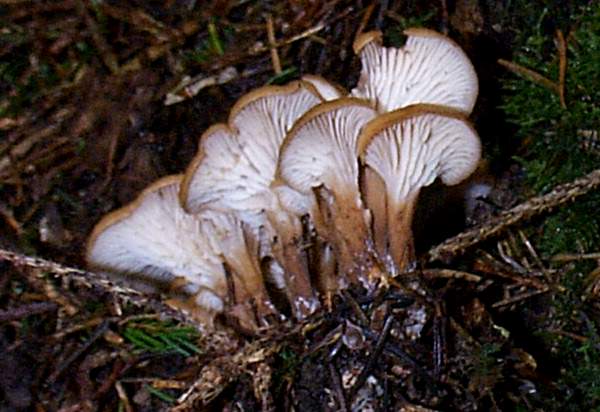
Distribution
An uncommon but distinctive mushroom, the Aniseed Cockleshell is found occasionally throughout Britain and Ireland as well as in most of mainland Europe. This species is also recorded in North America.
Taxonomic history
In 1821 Christiaan Hendrik Persoon established the basionym of this species when he described it and gave it the binomial scientific name Agaricus cochleatus. The currently-accepted scientific name of this species, Lentinellus cochleatus, dates from an 1879 publication by the Finnish mycologist Petter Adolf Karsten (1834 - 1917).
Synonyms of Lentinellus cochleatus include Agaricus cornucopioides Bolton, Merulius cornucopioides (Bolton) With., Agaricus cochleatus Pers., Agaricus confluens Sowerby, Omphalia cochleata (Pers.) Gray, and Lentinus cochleatus (Pers.) Fr.
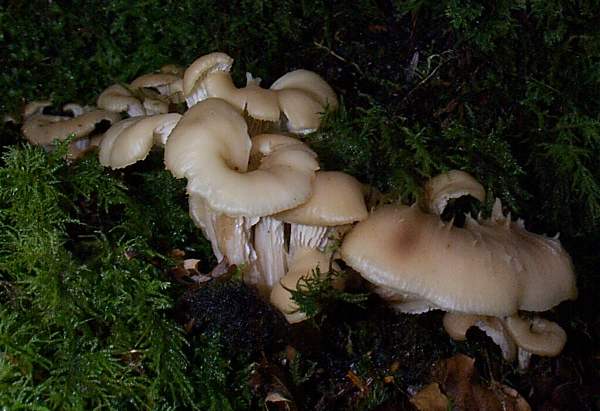
Etymology
Lentinellus, the genus name, was established in 1879 by Finnish mycologist Petter Adolf Karsten; the name comes from Lentinus, a similar mushroom genus, via the Latin lent- meaning pliable and -inus meaning resembling. Lentinellus is the diminutive form of Lentinus and it suggests pliable mushrooms similar to those in the genus Lentinus but rather smaller.
The specific epithet cochleatus comes from Greek and means to twist or to spiral (like the spiral structure within an ear, of course!).
In the past, many field guides used the common name Tawny Cockleshell mushroom when referring to Lentinellus cochleatus.
Identification guide
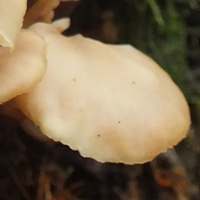 |
Cap3 to 7cm in diameter; a shell-shaped or sometimes funnel-shaped cap with a split down one side and the stipe offset from centre. |
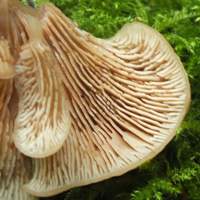 |
GillsDecurrent, crowded and very narrow with toothed edges; almost white, becoming pink and sometimes with inter-vein brown marks. |
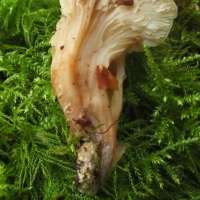 |
StemEccentric, tough and the same colour as the cap, becoming rusty brown at maturity. |
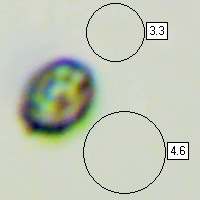 |
SporesBroadly ellipsoidal to subglobose, smooth or very finely warted, 4.0-5.5 x 3.2-4.5µm; amyloid. Spore printWhite. |
Odour/taste |
Sometimes not distinctive, but there is a commonly occurring form with an aniseed taste and smell. |
Habitat & Ecological role |
Saprobic, on or beside rotting stumps, usually of broadleaf trees; also beside woodland footpaths. |
Season |
August to November. |
Similar species |
Could be confused with the Branched Oyster Mushroom, Pleurotus cornucopiae, which is typically much larger and usually paler with gills that do not have toothed edges. |
Culinary Notes
The Aniseed Cockleshell mushroom is generally regarded as edible, although it is not a highly prized esculent.
Reference Sources
Fascinated by Fungi, 2nd Edition, Pat O'Reilly 2016, reprinted by Coch-y-bonddu Books in 2022.
Dictionary of the Fungi; Paul M. Kirk, Paul F. Cannon, David W. Minter and J. A. Stalpers; CABI, 2008
Taxonomic history and synonym information on these pages is drawn from many sources but in particular from the British Mycological Society's GB Checklist of Fungi.
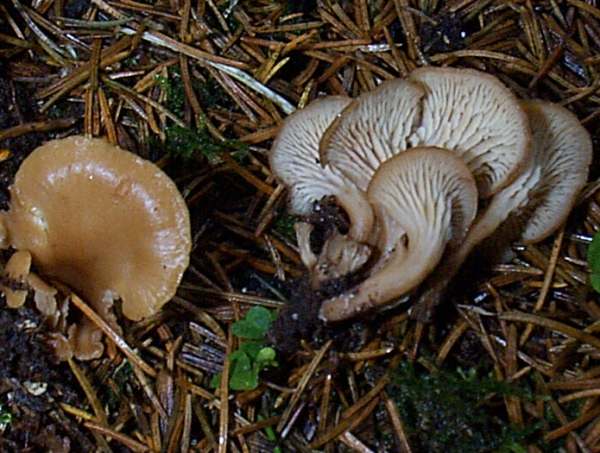
Fascinated by Fungi. Back by popular demand, Pat O'Reilly's best-selling 450-page hardback book is available now. The latest second edition was republished with a sparkling new cover design in September 2022 by Coch-y-Bonddu Books. Full details and copies are available from the publisher's online bookshop...
